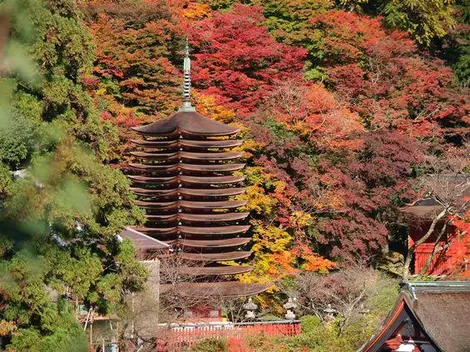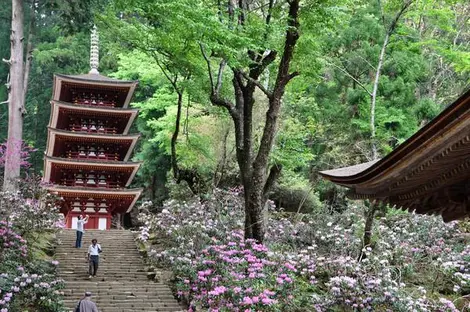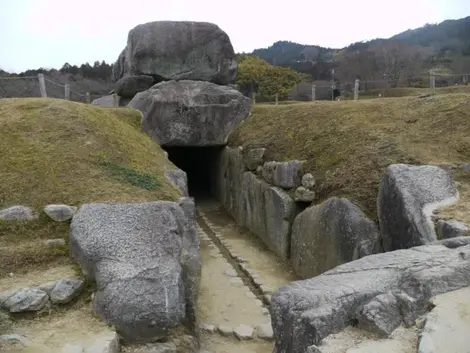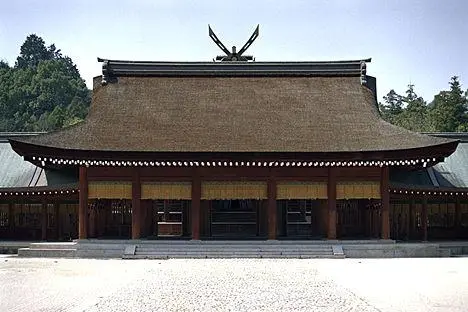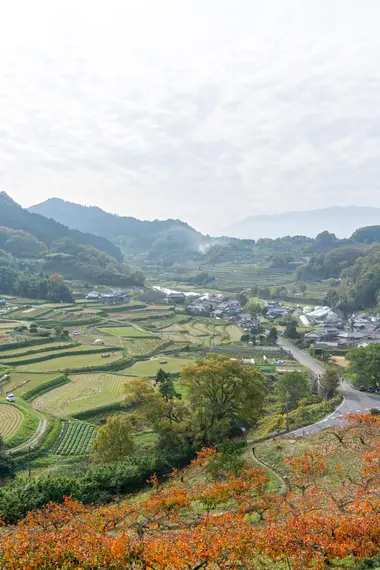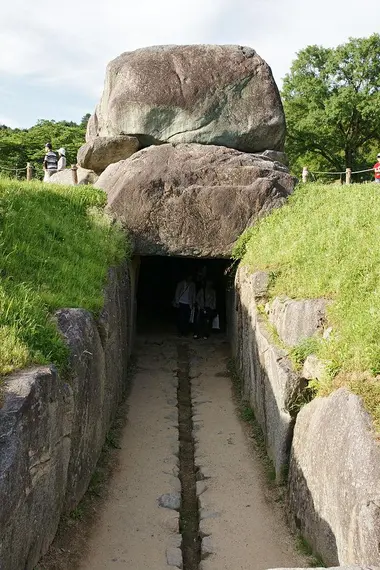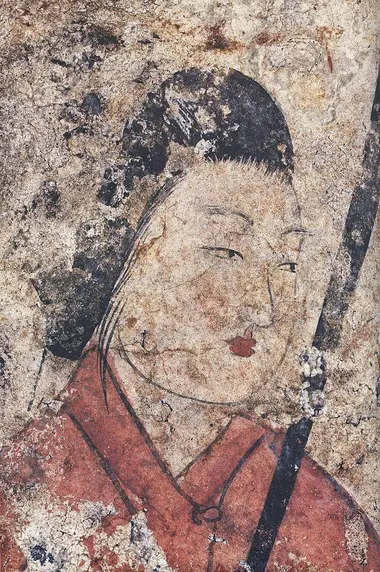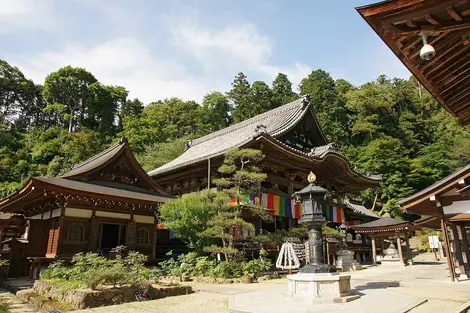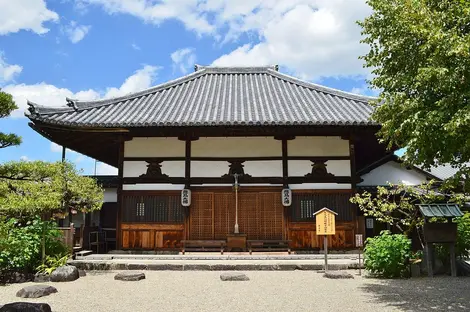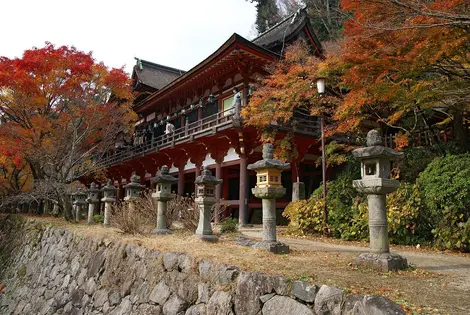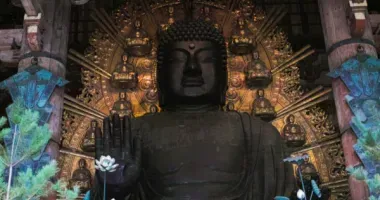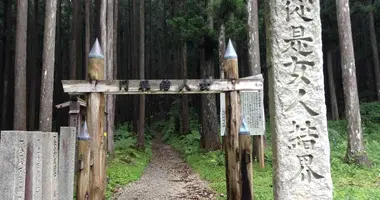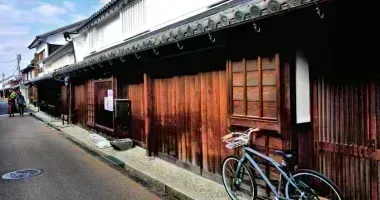The village of Asuka, the first capital of Japan 明日香村
- Published on : 28/05/2020
- by : R.A. / J.R.
- Youtube
Unmissable place in Japanese history
The village of Asuka was the first known capital of Japan but is today less known. Asuka and its region conceal many discoveries that deserve a visit: ancient Japanese tombs, the first Buddhist temple, or even vast landscapes of rice terraces...
Asuka, the first historical capital of Japan
Asuka is a village located in the center of Nara Prefecture, in the Kansai region. It is located just 40 km southeast of Osaka and is easily accessible by car or train.
The Asuka region is very valuable from a historical and archaeological perspective. At the dawn of Japanese history, the first known emperors decided that their kingdom needed a permanent capital: the village of Asuka, at the foot of the mountains, was chosen and hosted palaces and temples for more than a century. Giving its name to the Asuka period (飛鳥 時代), which extends between 538 and 710.
Around 710, the emperor finally left the city to install the capital in Nara, and history turned away from the small town.
- Read also: History of Japan, simplified chronology
Today, there is a collection of Buddhist temples and archaeological sites that illustrate the first centuries of Japanese history. The place is rather accessible, only 25 km from Nara
The historical and cultural riches of Asuka
In addition to its mountain landscapes and rice fields, the city and all its surroundings are particularly interesting for history buffs. If the village is much less known than Kyoto or Nara, it shelters the first temples, shrines, tombs, and stone monuments of Japan... You can visit kofuns, these ancient funerary monuments taking the form of a burial mound, seen frequently in the Kansai region.
- Read also: The rice fields of Aragijima Island
Once in Asuka, you can begin exploring the area with the Kashihara Shinto Temple which honors the spirit of Japan's first Emperor, Jimmu, and whose buildings were once part of the Kyoto Imperial Palace.
Transferred by Emperor Meiji in the nineteenth century. The temple is located in a classified forest which is worth a visit. Next door is the archaeological institute which exhibits the discovery of rare pieces from the Asuka period.
What to see in Asuka
Asuka is home to a number of must-see kofuns .
The Ishibutai tomb is arguably Asuka's most important kofun. This megalithic monument of the seventh century served as the burial of nobleman Soga Umako. The old and rugged construction impresses with its massive and powerful character.
Takamatsuzaka's tomb. This circular kofun was built between the late seventh and early eighth century. Known for its colorful wall fresco and depicting courtiers. A replica can be admired in the fresco room, the original being kept for protection.
To go further: Kofun, the ancient Japanese tombs
The temple of Asukadera. It is known as being one of the oldest Buddhist temples in Japan, having been built in 588. It was during the Asuka period that Buddhism spread widely over the Japanese archipelago. The temple also houses the oldest bronze statue of the Buddha known to this date.
Amakashi no Oka Park. It offers a beautiful walk at the top of the hill with a magnificent view of the region. The park is particularly beautiful during the cherry blossom season.
The Oka-dera temple, nestled in the hollow of the mountains, is gorgeous during the koyo season in November.
The Tanzan shrine, away from the village is the large thirteen-story pagoda. Originally a Buddhist temple, the place is now a Shinto shrine, but the pagoda has remained.
The Hasedera and Muroji temples are real jewels set in the setting of the Asuka mountains. Particularly popular in spring and autumn due to the beauty of the landscape around them.
Address, timetable & access
Address
Timetable
Access to Kashihara/Asuka: Archaeological Institute and Kashihara Shrine: From Nara Kintetsu Station direct to Kashiharajingu-mae (43 min, 1000 JPY) Tomb of Ishibutai and Asukadera: Continue on the Nara Kintetsu line to Asuka Station (1090 JPY) then take a Kame Loop bus (250 JPY) which goes to all Asuka sites and returns to the Kintetsu line at Kashiharajingu-ma station. Tanzan, Muroji, and Hasedera temples: Take the JR Sakurai line from Nara Station to Sakurai Station (30 min, 320 JPY) then take a bus to Tanzan-jinja station (25 min, 490 JPY) . For Hasedera temple, change at Sakurai on the Osaka Kintetsu line to Hasedera (42 min, 580 JPY). Hasedera can be reached by a 15 min walk. For Muroji Temple, continue to Muroguchi-Ono (54 min, 680 JPY) and take a bus to Muroji-mae (15 min, 430 JPY).Access
Archaeological Institute: Open 9:00 am to 5:00 pm, closed Mondays, free Kashihara Shrine: Open daily 6:30 am to 5:00 pm, free Ishibutai Tomb: Open daily 8:30 am to 5:00 pm, JPY 250 Asukadera Temple: Open daily 9:00 am to 5:30 pm, JPY 350 Tanzan Temple: Open daily 8:30 am to 5:00 pm, JPY 500 Muroji Temple: Open daily 8:30 am to 5:00 pm, JPY 600 Hasedera Temple: Open daily 8:30 am to 5:00 pm, JPY 500




